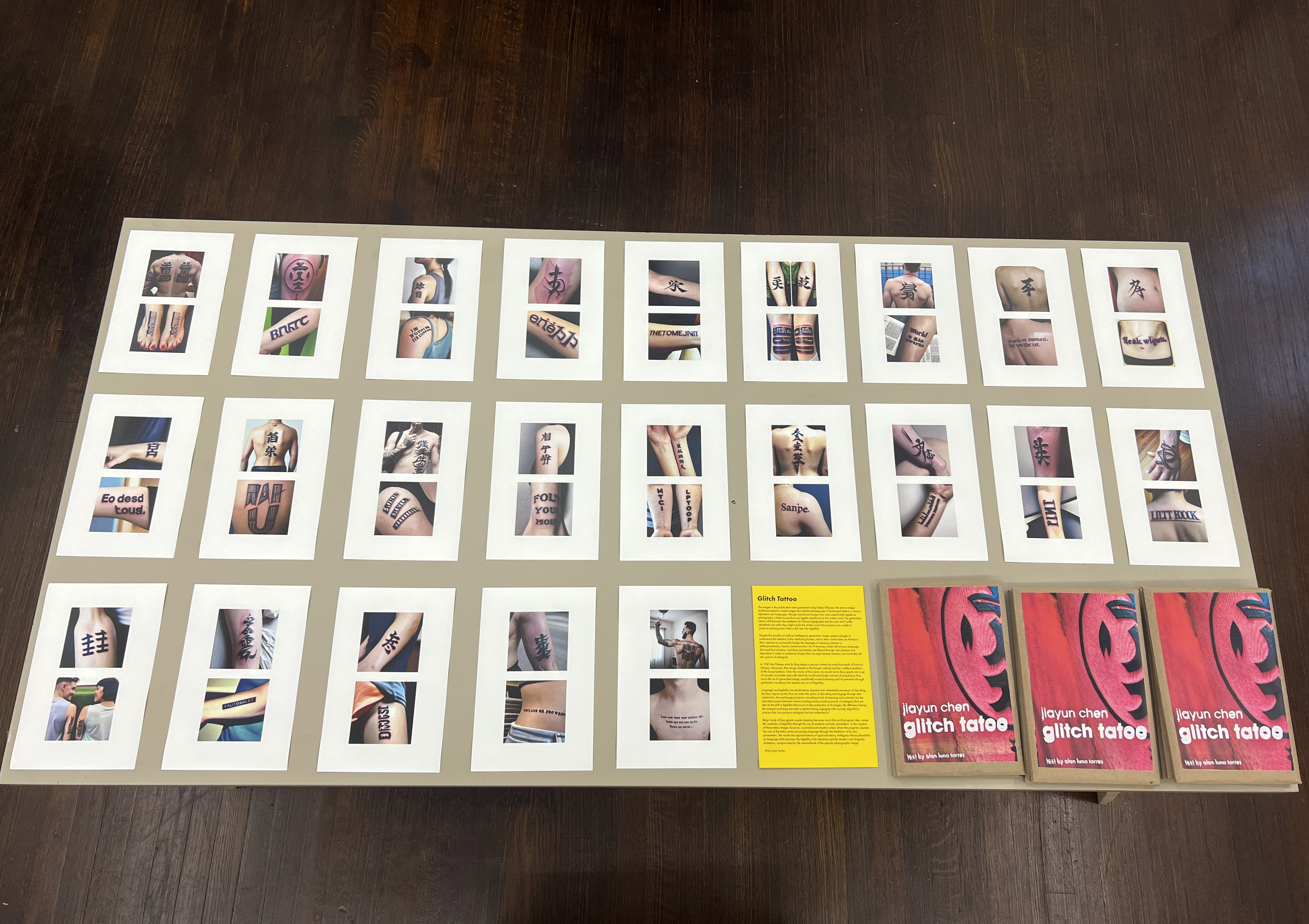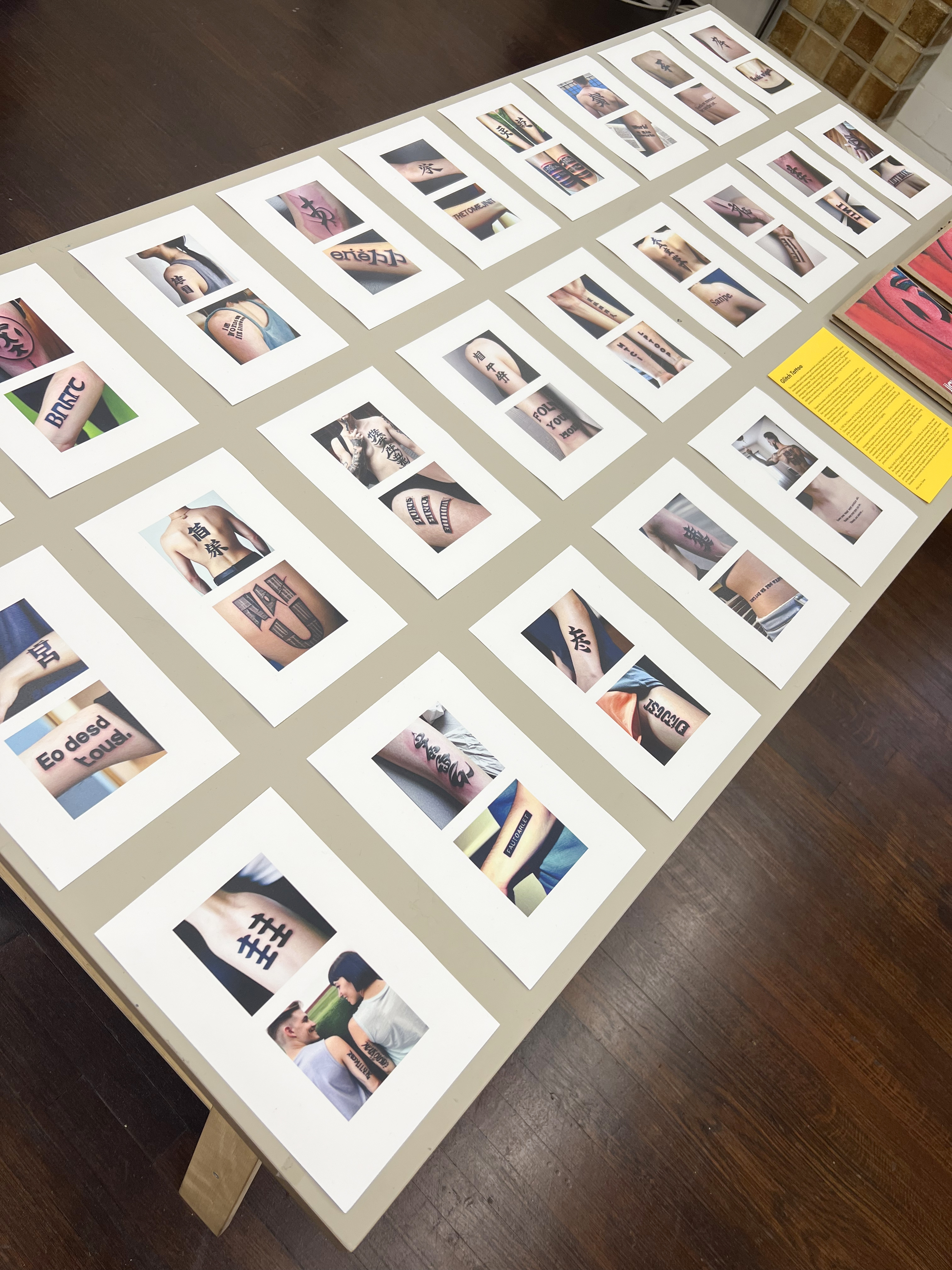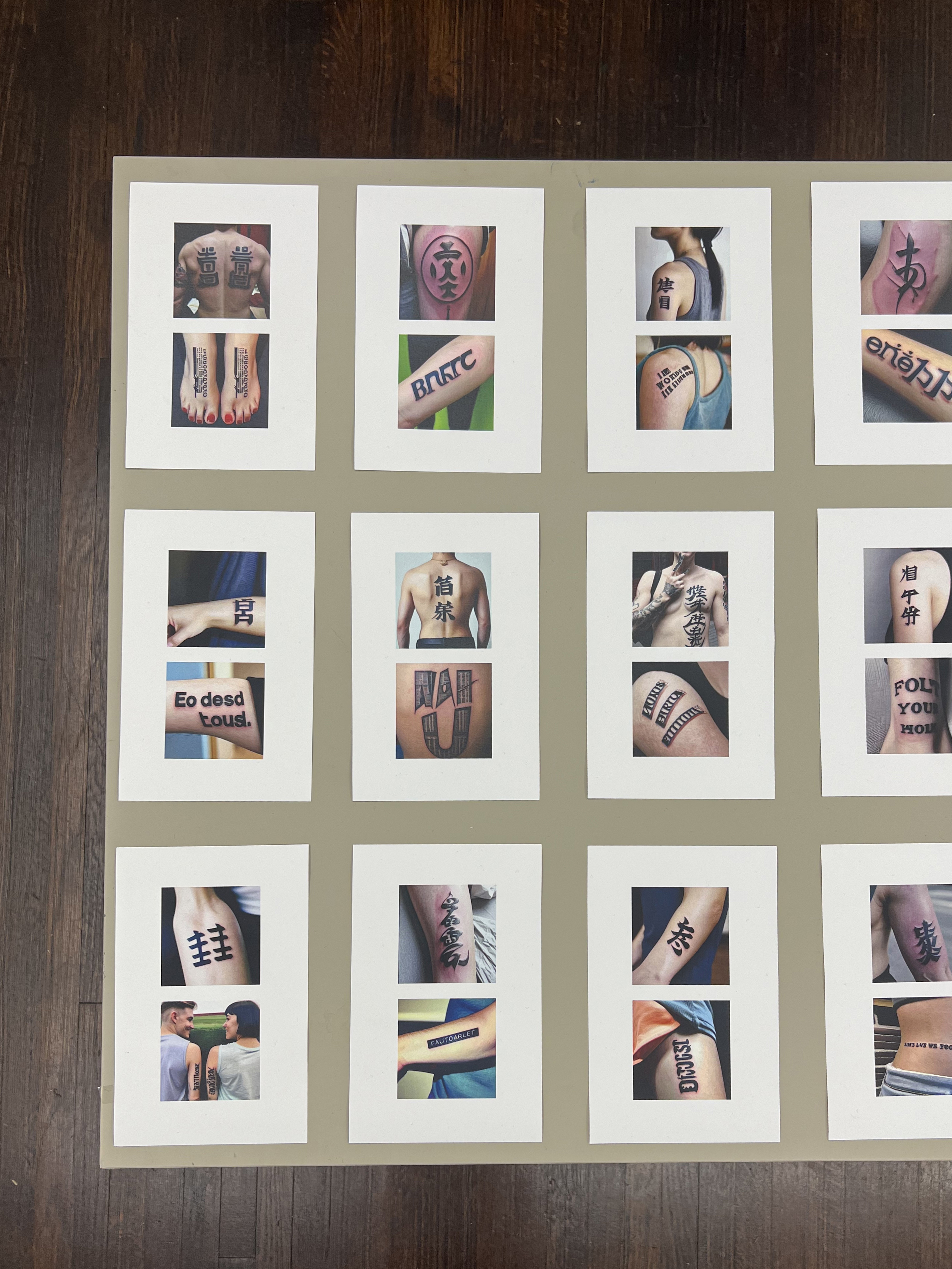Glitch Tattoo
This self-published zine is a part of the artist’s solo exhibition “tat skin slip tongue”. The 23-page zine focuses on AI-generated images of text-based tattoos. On each page, the upper image recalls Chinese characters, while the bottom one features English tattoos. It aims to explore the chance-operated process that generates ambiguous language and symbols, blurring the boundaries between intended meaning and chance outcomes.
23 pages
Prints on paper
8.5 by 5.5 inches
2024
Jiayun Chen, text by Alan Torres
Text from the zine:
“The images in this publication were generated using Stable Diffusion, the text-to-image model prompted to create images that imitated photographs of text-based tattoos in various alphabets and languages. Though it produced images that were superficially legible as photographs, it failed to produce any legible semblance to the written word. The generated tattoos drift between the aesthetics of Chinese logographs and the Latin and Cyrillic alphabets, but while they might evoke the written word, the program was unable to produce meaning even when it did veer into legibility.
Despite the moniker of artificial intelligence, generative image systems struggle to understand the intention of the interfacing human, and in their current state are limited in their capacity to successfully bridge the slippages of meaning inherent to anthroposemiotics, human communication. An AI learning model will process language divorced from intention, and those parameters are filtered through vast datasets and algorithms in order to synthesize images that can approximate intention but inevitably fall into spaces of ambiguity.
In 1987, the Chinese artist Xu Bing began a process where he made thousands of fictional Chinese characters, their design based on the Kangxi radicals and the codified aesthetics of the Song typeface. Over the course of four years, he would carve these glyphs into a set of wooden moveable type with which he would print large volumes of pseudotexts that, much like an AI-generated image, superficially evoked meaning and its potentials through parametric conditions but resisted any sort of legibility.
Language and legibility are simultaneous, layered and contestable processes of decoding, but they require parties that can enter the space of decoding and engage through their subjectivity. Any exchange produces cascading levels of meaning and potential, but the interstitial spaces between communicating parties produce spaces of ambiguity that are akin to the drift in legibility that occurs in the production of AI images, the difference being the unequal exchange between a sentient being engaging with a purely algorithmic process that can produce ambiguity but not understand it. Bing’s body of faux-glyphs evades meaning because, much like an AI program, they create the aesthetics of legibility through the use of aesthetic-semiotic parameters. In the creation of these tattoo images however, a paradoxical situation arises where the program assumes the role of the tattoo artist, processing language through the limitations of its own parameters. The results are approximations of approximations, ambiguity whose plausibility as language drifts between the legibility of its intentions and the reader’s own linguistic limitations, compounded by the verisimilitude of the pseudo-photographic image.”
—Alan Torres



